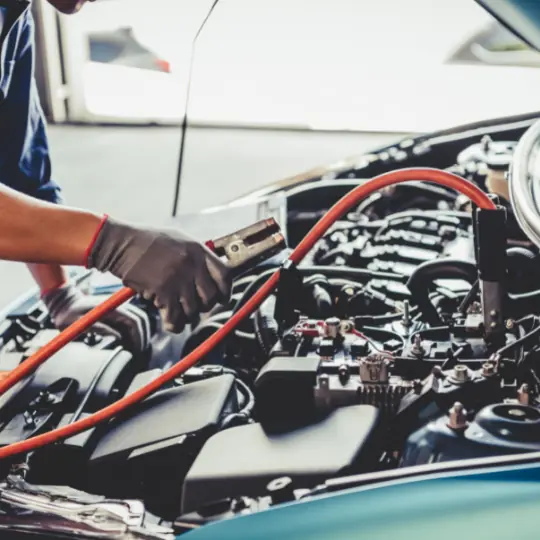
There are many ways to become an expert in the vehicle engineering field. You can get started by reading about it, watching videos about it, and even taking a course on the subject.
The most important thing is that you want to be passionate about what you are doing. If you feel like this is something that interests you, then there’s no reason why you shouldn’t be able to learn everything there is to know about car design and engineering.
This article will provide you with some insight on how you can become an expert vehicle engineer and design cars without looking amateur.
What’s Vehicle Engineering?
Vehicle engineering deals with motorcycles, cars, buses, trucks, etc. It includes branch study of mechanical, electronic, software and safety elements.
Vehicle engineering involves designing and manufacturing, maintaining, and repairing the automobiles that are manufactured. In the past, vehicle design engineers specialized in aesthetics because they had to design cars to suit their needs based on functional considerations.
Vehicle engineering is a key component of any car manufacturing company in order to ensure that safety, performance, and durability are met. Vehicle engineering typically consists of two aspects: design and production.In the design aspect, engineers are responsible for creating the following:
A) The chassis, including its design and properties. B) The engine, including its design and its power. C) The bodies of the car, including their designs and properties. D) Electronic controls such as steering wheel and dashboard controls. E) In-car entertainment systems.
What is the Role of a Vehicle Engineer?
A vehicle engineer is responsible for designing, building, and testing vehicles. As the industry is growing, the role of a vehicle engineer has also been evolving. They are now responsible for designing and testing cars while also making sure that they are safe to operate in a public environment.
An expert vehicle engineer should be able to manage their time well and be able to multitask with ease.
A vehicle engineer is a person who designs new engines and engines in general. They are also responsible for developing car production systems that meet customer demands as well as improve fuel efficiency.
A vehicle engineer has many responsibilities, one of which is to design the engine that powers the vehicle. The engine design includes such tasks as calculating the needed torque and fuel efficiency while incorporating an engine’s capabilities into the car’s overall design.
There are a number of different types of engineers, including combustion engine designers, mechanical engineers, and manufacturing engineers.
How To Become An Expert Vehicle Engineer?
There are a lot of factors that go into becoming an expert in the field of Vehicle Engineering. One of the most important factors is to get hands-on experience and learn from others who have done it before you.
The best way to become an expert in this field is by gaining experience and learning from those who have gone before you. In order to do this, you should find a mentor, ask for feedback, and make sure that your work is always improving.
This question also was answered by Experts on Quora and here are the skills they mentioned:
- Should have basic theoretical knowledge of the working and mechanism of various parts in an automobile (including mechanical systems, electrical systems, electronics, etc.,)
- Should have gained some practical experience (like repairing his own bike/car, or at least a cycle). Should have a working knowledge of some modeling and finite element software.
- Get yourself updated with all the latest happenings in and around that field. It is nice to know about the development phase of an automobile (i.e. from concept to production)
- Should have gained exposure by interning at an authorized service center. Should have good communication and problem-solving skills
- Various technical terms are used in the industry. It would be helpful if you have programming skills. Learn the core of Mechanical Engineering: Heat Transfer, Thermodynamics, and Fluid Mechanics. Also Machine Design and Strength of Materials (Solid Mechanics).
If you want to become an expert Vehicle Engineer then you should acquire theoretical and practical skills. Here comes the role of Vehicle Engineering BSc at The University of Debrecen.
What’s The Vehicle Engineering BSc at The University of Debrecen?
It’s a (7-semester) 3.5-year the purpose of the program is to train vehicle engineers who are able to accomplish basic engineering tasks related to the design, manufacturing, systems thinking perspective of operation, and the repair of automotive, railway, naval, and air vehicles, vehicle systems, construction, and material handling machines and mobile machinery, considering the technicalities of transportation and logistics.
They perform these tasks in accordance with the ruling principles of safety, environmental protection, and power management. Students will be prepared to continue their studies at the Master’s (MSc) level.
Specializations: Vehicle Manufacturing, Automotive Vehicle Engineering, Aircraft Engineering (starting in September 2022).
Internship, practice: Students should complete a 6-week professional practice.
Admission Requirements: English language proficiency (TOEFL 513 /IELTS 5.5/oral examination). A high school certificate, entrance examination in mathematics and physics (written and oral).
What is Essential Vehicle Engineering Equipment?
There are many types of vehicle parts that are made to make a vehicle function more efficiently. Essential vehicle engineering equipment can help vehicles perform at their best.
Some of the most common items that you would find in the different types of car parts include brake hoses, engine coolants, spark plugs, and intake manifolds. These are just some examples of essential vehicle engineering equipment. There are a lot of things that you need to consider when it comes to finding the parts that you need for your vehicle. For example, if you are looking for spark plugs, then you should consider what type of engine your car is equipped with. It is possible that the spark plugs will differ by manufacturer and model, so this needs to be taken into consideration as well.
How Car Engines are Made
Car engines are complex machines that involve a lot of engineering and design. This process can be complicated and time-consuming, not to mention expensive.
To make it easier for customers to find good car engines, car companies have started using AI-based software to design them. The software follows these steps:
• Scavenge through existing designs in order to understand what customers want
• Design an engine on a 3D printer that is optimized for fuel efficiency, performance, and cost-effectiveness
• Test the design on the computer before making it with the computer’s physical components
How Do Creative Designers Design Cars?
Exterior design
The exterior of car designs is the most important part of the vehicle, so it’s a big deal that they develop them. Car designers are responsible for developing the proportions, shape, and surface details of the design. Creatively designing an exterior is typically done by hand before being digitized. Drawings often progress through cycles of development, approval, and refinement. As more detailed images are approved by management, the department that handles digital rendering acts to produce a final version of the drawing.
Collecting feedback from potential customers is a great way to make sure products meet the needs of your local market. Consumer input is valuable during the design process and will help you refine concepts until you’re satisfied with them. Once the drawings are completed and or when desired, the digital models are created by programs and can be seen on a computer. Quarter-scale and full-scale mockups are created of design work using data.
This is a process where machines carve three-dimensional objects using a computer-designed model. It can take many hours for one big surface to be created, but with milling machines, it’s possible to have multiple small surfaces at the same time. With a remarkably diverse range of software and 3D finishing options, the clay model is still an important tool for completing exterior design evaluations.
Interior design
The designer responsible for the vehicles’ interior develops shapes, proportions, surface patterns, and placement for the vehicle’s instrument panel, seats, door panels, and pillars. Here, the emphasis is on a number of factors including ease of use, armrests for all passengers, and ensuring the passenger seat is always fully functional. There’s no difference when it comes to interior design: here, the procedure is exactly the same with sketches, digital models, and clay models.
Color and trim design
The color and trim (or color and materials) designer are responsible for the research, design, and development of all interior and exterior colors and materials used on a vehicle. These include paints, plastics, fabric designs, leather, grains, carpet, headliner, wood trim, and so on. Color, contrast, texture, and pattern must be carefully combined to give the vehicle a unique interior environment experience. Designers work closely with exterior and interior designers.
Designers draw inspiration from other design disciplines such as industrial design, fashion, home furnishing, architecture, and sometimes product design. Specific research is done into global trends to design for projects two to three model years in the future. Trend boards are created from this research in order to keep track of design influences as they relate to the automotive industry. The designer then uses this information to develop themes and concepts that are then further refined and tested on the vehicle models.
Graphic design
The design team takes pride in the creation of graphics for important items, such as badges, decals, etc. They can create graphics that are easy to transfer to different items for a brand identity.
Computer-Aided Design and Class-A development
First, the sketches and rendering are transformed into 3D digital surface modeling and rendering. Next, they’re used to evaluate mathematical data that may be incomplete in its initial stages so that it can be continually improved. The 3D model must be fully developed and meet the aesthetic requirements of a designer, as well as all engineering and manufacturing requirements during each development phase.
The fully developed, the digital process will be undergoing a re-design for manufacturing and meeting the Class-A surface standards that involve both technical and aesthetic factors. This data will be further developed by a Product Engineering team. A background in industrial design or tooling engineering is usually a requirement for entry-level modelers. Autodesk Alias and ICEM Surf are the two most widely used software tools for Class-A development.
In Conclusion,
With vehicle engineers, the industry has been able to make a significant impact on how vehicles are designed and made, which has led to significant reductions in vehicle weight and increased fuel economy.

